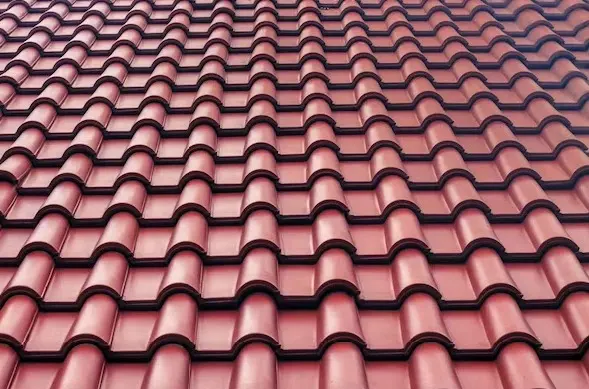Your roof is a system, not just shingles. When one component fails quietly—underlayment, flashing, ventilation, fasteners—the damage spreads, energy costs rise, and “minor” fixes snowball into big invoices. The fastest way to stop that bleed is early detection and clean execution by people who know the standards inside out. Working with a CertainTeed select shingle master gives you proven installation practices and fewer “mystery” callbacks.
1) Micro-leaks that live behind paint and drywall
Tiny penetrations around nail holes, lifted shingle edges, and hairline flashing gaps often don’t drip in visible places. Instead, moisture wicks horizontally across sheathing and insulation. You get faint ceiling stains months later—by then, insulation is clumped, wood is softened, and mold has a head start. A trained eye will trace stains to the real entry point (often several feet away) and reset the entire water shed—starter, field shingle, underlayment, and flashing—so the leak doesn’t return. A seasoned CertainTeed select shingle master knows how to rebuild these small areas to manufacturer spec, not just smear sealant on the surface.
2) Bad attic ventilation that cooks your roof from the inside
Poor intake and exhaust airflow traps heat in summer (baking shingles from below) and moisture in winter (feeding rot and mildew). You’ll notice curling shingles, recurring ice dams, and higher HVAC bills. This is a systems problem: soffit intake must match ridge or box vent exhaust, baffles must keep insulation from choking airflow, and bath fans must terminate outdoors—not into the attic. Correcting the ratio and pathways is cheaper than shaving years off shingle life. Here again, a CertainTeed select shingle master will balance intake/exhaust to hit code and warranty requirements, not “eyeball” it.
3) “Good-looking” shingles that are actually near the end
From the street, a roof can look fine while granule loss exposes asphalt to UV, making the mat brittle. Walk the roof and you’ll find mineral piles in gutters, spider-cracks, and scuffed high-wear zones (hips, ridges, south-facing slopes). Left alone, capillary action pulls water through tired mats during wind-driven rain. Early replacement of failing slopes (not necessarily the whole roof) can stop a leak cycle and preserve interior finishes. A detail-driven crew—ideally a CertainTeed select shingle master—will also swap brittle accessories (pipe boots, gaskets) during the same mobilization.
4) Flashing failures around chimneys, walls, and skylights
Step flashing that’s too short, counter-flashing not cut into mortar joints, or skylight kits installed without manufacturer kerf spacing—these are classic, wallet-draining mistakes. Water doesn’t need a hole; it needs a path. When flashing isn’t layered shingle-style (always directing water downhill), wind pushes water sideways and backward into the assembly. Proper fix: remove courses to expose metal, reset step flashing in sequence, and counter-flash correctly (into the joint, not glued on the face). A CertainTeed select shingle master will also evaluate kick-out flashing at roof-to-wall terminations—cheap part, huge failure point if omitted.
5) Weak decking and soft spots underfoot
Plywood delamination, OSB edge swell, and antiquated plank gaps create soft spots that flex under load. Flexing breaks shingle seals, opens fastener holes, and causes “telegraphing” ridges you can see from the curb. Repairs range from localized deck replacement to a full overlay if the field is compromised. Skipping this step and nailing into mush is how you get blow-offs and chronic leaks. Pros will measure fastener pull-out strength, re-sheet as needed, and fasten with the correct pattern to meet wind ratings—another place where a CertainTeed select shingle master prevents rework.
6) Unsealed fasteners and accessory penetrations
Satellite mounts, abandoned dish brackets, solar standoffs, holiday-light clips—random penetrations are leak magnets when they’re not flashed and sealed to spec. Exposed nails at ridge caps or on metal flashing faces rust and become straws for water. The cure isn’t “goop”; it’s removing and reinstalling with gaskets, proper flash kits, and concealed fasteners where possible. Annual roof tune-ups that reseal fasteners and replace spent boots are low-cost, high-ROI maintenance.
7) Low-slope trouble you can’t see from the driveway
On low-slope or “almost flat” sections (over porches, additions, or dormers), ponding water beats up membranes and finds pinholes at seams, drains, and edges. Even with shingles nearby, these areas often need a different system (modified bitumen, TPO, or self-adhered underlayments rated for low slope). Edge metal, tapered insulation for positive drainage, and correctly located scuppers are the difference between a dry assembly and a drip that ruins interior drywall. A competent crew won’t mix materials haphazardly; they’ll transition between systems with manufacturer-approved details.
Early warning signs you can check in five minutes
- Gutters: Excess granules (like coarse sand) point to accelerated shingle wear.
- Attic: Darkened sheathing around nails (“nail frost” history) indicates condensation issues.
- Ceilings: Tannish “ghost” rings that grow after storms signal slow leaks, not AC condensation.
- Perimeter: Staining below roof-to-wall junctions suggests missing kick-out flashing.
- HVAC bills: Unexplained seasonal spikes can be ventilation or insulation conflicts under the roof.
What proactive maintenance actually saves money
- Documented inspections twice a year and after major storms. Photos + notes help spot patterns and support insurance claims.
- Fastener and sealant refresh on accessories every 12–24 months.
- Gutter cleaning and slope checks to keep water moving away from vulnerable edges.
- Targeted slope replacement when one face is failing rather than “waiting” for a full system failure.
- Hire credentialed installers who follow manufacturer details so warranties have real teeth.
Why the right certification matters
Roofing isn’t just “handy” work; it’s spec-driven. Manufacturer credentials require training, detail adherence, and proof of performance. Choosing a CertainTeed select shingle master pairs you with installers who:
- Use the full system (starter, underlayment, field, hip & ridge) as designed.
- Nail patterns and exposure lines exactly, protecting wind uplift ratings.
- Build flashing and transitions to published details—not improvisations that void warranties.
- Provide stronger workmanship coverage backed by the manufacturer, not just a business card.
How hidden problems drain your wallet—line by line
- Energy waste: Superheated attics force AC to run longer; poor ventilation shortens shingle life—double hit.
- Interior repairs: One leak can mean insulation replacement, drywall, primer, paint, and sometimes flooring.
- Repeat service calls: Cheap “patches” that miss root causes lead to the same invoice, again and again.
- Insurance friction: Poor documentation or non-standard repairs can sink claims after a storm.
- Premature re-roof: Skip the details now; pay for a full tear-off years early.
A quick, wallet-friendly action plan
- Book a photo-documented inspection before the next heavy weather cycle.
- Fix ventilation first so any new materials last as long as they should.
- Address flashing and low-slope transitions next; these create most chronic leaks.
- Replace the weakest slope proactively if the rest of the roof still has life.
- Schedule an annual tune-up (boots, fasteners, sealants, gutters) to stay ahead of small failures.
Small problems stay small when you catch them early and fix them right. Put eyes on the roof now, tighten up the details, and make every layer—from shingles to ventilation—work as a system. That’s how you stop the slow bleed and keep more cash in your pocket with the help of a proven CertainTeed select shingle master.
Also Read-Getting the Best Offers: Preparing Your Home for Showings







